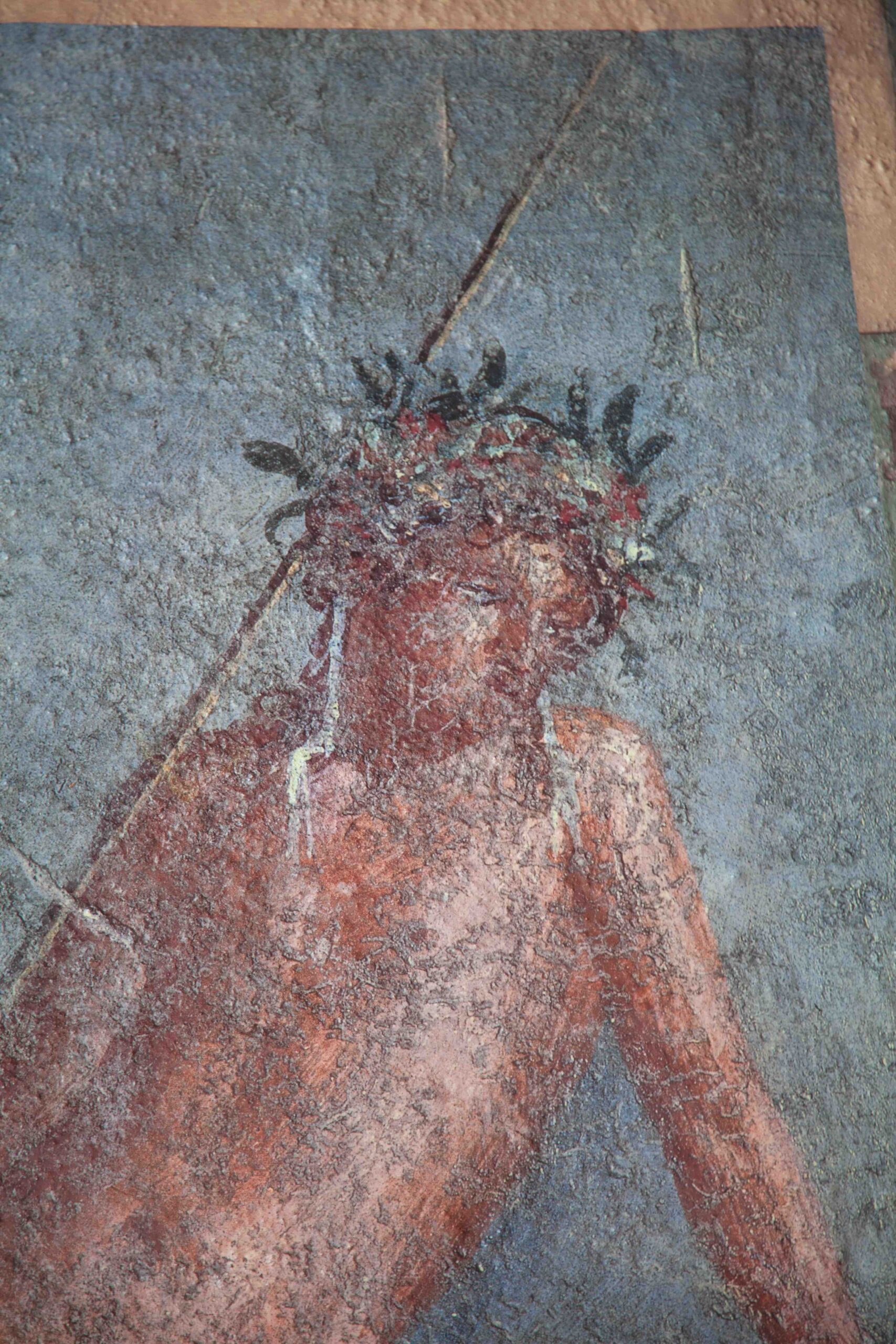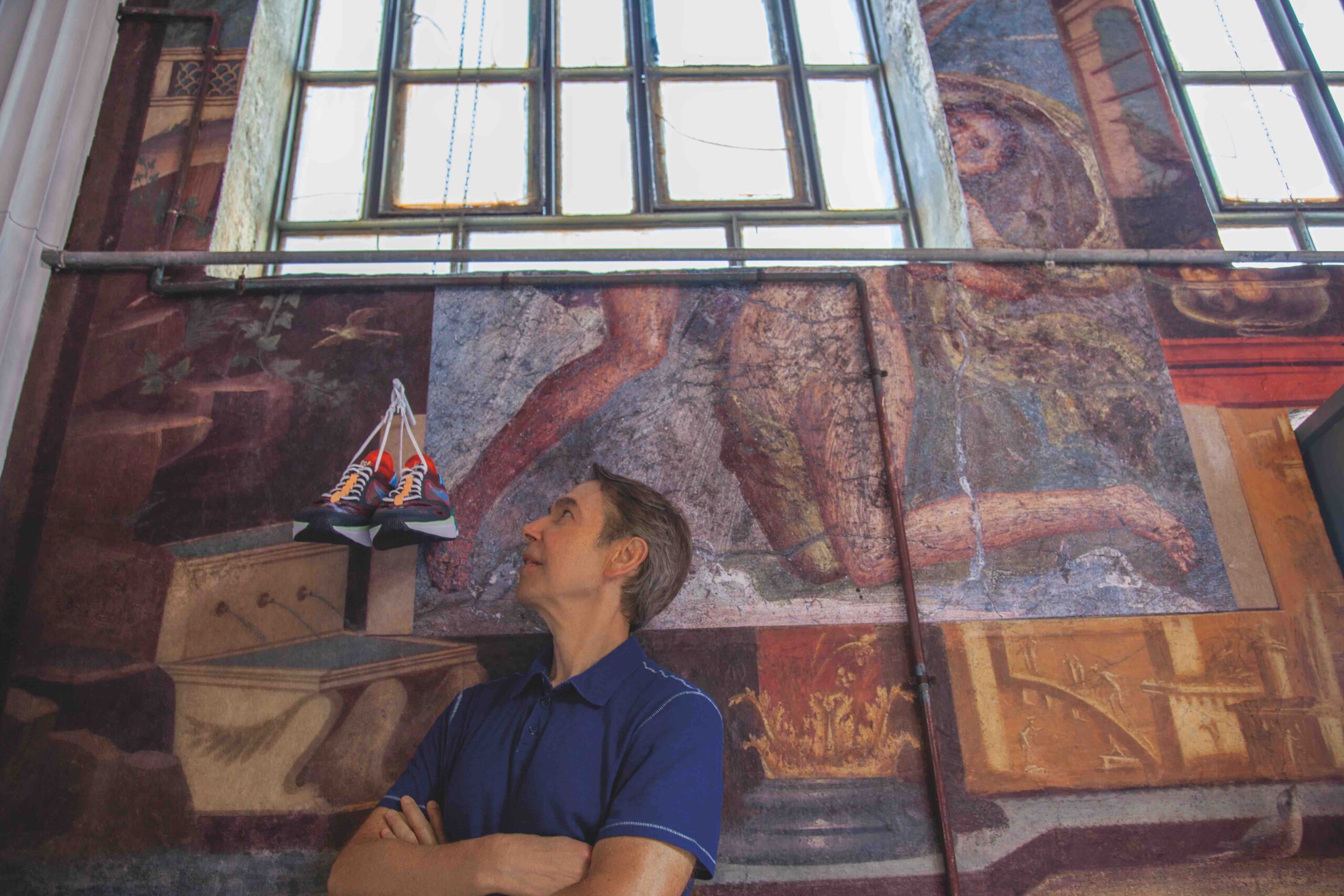On that day, Koons guided us through his new artworks series especially conceived for the DESTE Foundation Slaughterhouse spaces. The show, open to the public until October 2022, is an installation presenting new sculptures by Koons along with readymade objects selected by the artist to engage the viewer in a metaphysical dialogue between the contemporary and ancient. The exhibition marks over twenty years since Jeff Koons’s last solo show in Greece.
Jeff Koons in conversation with Bill Powers
BP When I just arrived to the studio you were huddled in a production meeting. Can I ask what you were discussing?
JK I’m always working right up to the end so that any project can be as fully-realized as possible. For the show in Hydra we have elements coming from all different places so there are shipping logistics, questions about finishes… I’m working on a thirty foot in diameter wind spinner of the face of Apollo. It will stand atop the Slaughterhouse so when you arrive by sea the first thing you notice is this reflective sun. It’s made from a bronze material so it has an ancient quality, but the whole exhibition plays on the metaphysics of time.
BP And in terms of scale, it seems that you have always been fascinated by these oversized symbols of humanity. I remember you once telling me about a giant house in the shape of a shoe you saw as a child in Pennsylvania.
JK Wind spinners are a kind of lawn ornament, too. But the ancient world was filled with this type of awe and wonder.
BP I always found it amazing that The Colossus of Rhodes existed in some diminished capacity for like five hundred years after it fell down. There was a reverence for ruins which is lost in contemporary culture.
JK I love how the references carry on though. Our Statue of Liberty comes directly from The Colossus of Rhodes, those types of beaming rays emitting from her head.

“Apollo is the sun god so if you look at our concept of transcendence, Apollo is at the core of that. Not just culturally, but spiritually!”
BP If you had to pick one era: Greek or Roman?
JK Greek, but we only know the Greek through the Roman. It’s hard because you are often responding to a Roman copy of the Greek. I have a new painted sculpture of Apollo with a kithara. The original marble is in The British Museum. I remember about twelve or fourteen years ago seeing the piece in London and going, “Wow.” I called my wife over to look. I was so taken by their Apollo. I returned again maybe six years ago and thought, “This is the most sensual sculpture.”
BP What aspect? The pose? The muscularity?
JK It’s Apollo so you have both the masculine and the feminine together.
BP My favorite depiction is Bernini’s Apollo and Daphne in Rome at the Borghese.
JK When Apollo is playing music his feminine identity comes out. He’s much more curvy and voluptuous. Of course, he is with his kithara which was the original guitar. But at the same time, Apollo is a killer so he has his bow and arrows and the serpent by his side. Apollo is the sun god so if you look at our concept of transcendence, Apollo is at the core of that. Not just culturally, but spiritually.
BP I’m seeing the connection now between your exhibition in Greece this summer with Apollo and your NFT project on the moon. It’s very yin and yang.
JK That’s what I was getting at. Of course the Moon Phases are celestial and so is the sun sculpture at the Slaughterhouse. Both deal with time. And both are based in Greek philosophy.
BP Are you putting an actual gazing ball on the moon?
JK I’m putting 125 Moon Phases on the moon. The spheres will be housed in a plastic cube with the eclipsed moon at its core. All these things are NASA-approved materials, which deflect radiation and ultraviolet rays. These precautions keep the objects pure in perpetuity. They’re able to withstand the elements. All the Moon Phases will include vapor deposition putting a thin coat of metal on top of each sphere for reflectivity. Each sphere has to weigh less than eight grams due to limits on the payload.
BP And each sphere is named after an icon?
JK Each one is named after a person, yes.
BP I see one Moon Phase is named after David Bowie. Didn’t he interview you once for Modern Painters magazine?
JK I feel very fortunate to have called David Bowie my friend, to have had a chance to interact and spend time together. What a tremendous talent. When I was in art school in 1972 he was such an impactful artist. I spoke to David about making a painting of him as Apollo. The astral sphere on Ziggy Stardust’s forehead.
BP Who else is represented as a Moon Phase?
JK The range will go from David Bowie to Praxiteles to Elvis Presley to Marilyn Monroe to Mother Teresa to Salvador Dalí.
BP Having seen The Andy Warhol Diaries on Netflix recently, it reminds me of how artists sometimes hide biography in what would appear to be pop culture references. Before I watched the Warhol series, for instance, I never considered that when Andy painted the Paramount mountain logo it was actually a tacit nod to his boyfriend. In your case, having people like Bowie and Dalí whom you dealt with in real life makes it a personal connection and elevates them from simply being icons.
JK I remember when Andy was making those works. What you also had going on in the 1980s, there were companies rebranding, modernizing.
BP So how did you winnow the names of the Moon Phases down to 125 people?
JK Any type of list I make is going to be subjective, but I tried to incorporate all different cultures.
Read the full interview on Muse September Issue 60.

“My work has always had that aspirational quality. It’s about becoming. Not just becoming as an individual, but as a community.”
Jeff Koons: Apollo, on view at DESTE Foundation Project Space, Slaughterhouse, Hydra, until October 31, 2022.













